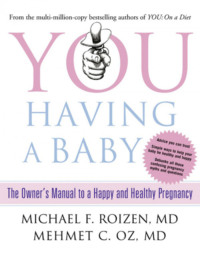
Полная версия
You: Being Beautiful: The Owner’s Manual to Inner and Outer Beauty
Your Feeling Beautiful Raw Score
How you feel is a combination of whether you are in pain and how much energy you have. If you are in pain, it’s hard to feel beautiful. If you’re dragging all day, it’s pretty darn hard also to be a beauty.
If Your Raw Score Is
4–14
If you score in this range, you may have some kind of chronic pain like arthritis that makes you feel like one tired and hurtin’ pup. Pain may be keeping you from exercising as much as you would like, which may also affect your energy level. The chapters in Part II will be particularly important to you.
15–21
There are days when you feel as though your get-up-and-go got up and went. On those days, you’re just happy to get through the day (certainly not a recipe for beauty). We’ll have a lot to say about how you can feel better and increase your energy level.
22–28
Most of the time you feel pretty good. You get out of bed, you have a full day. Not much keeps you from doing what you want to do. Keep it up. And check out the tips in Part II to help you keep feeling good and running strong.
Part III: Being Beautiful
Answer these questions (honestly).
11. Check the one statement below that best describes your average happiness.
IN GENERAL, HOW HAPPY OR UNHAPPY DO YOU USUALLY FEEL?: Extremely happy (feeling ecstatic, joyous, fantastic)!
Select Only One: (11 pts.)
IN GENERAL, HOW HAPPY OR UNHAPPY DO YOU USUALLY FEEL?: Very happy (feeling really good, elated)!
Select Only One: (10 pts.)
IN GENERAL, HOW HAPPY OR UNHAPPY DO YOU USUALLY FEEL?: Pretty happy (spirits high, feeling good).
Select Only One: (9 pts.)
IN GENERAL, HOW HAPPY OR UNHAPPY DO YOU USUALLY FEEL?: Mildly happy (feeling fairly good and somewhat cheerful).
Select Only One: (8 pts.)
IN GENERAL, HOW HAPPY OR UNHAPPY DO YOU USUALLY FEEL?: Slightly happy (just a bit above neutral).
Select Only One: (7 pts.)
IN GENERAL, HOW HAPPY OR UNHAPPY DO YOU USUALLY FEEL?: Neutral (not particularly happy or unhappy).
Select Only One: (6 pts.)
IN GENERAL, HOW HAPPY OR UNHAPPY DO YOU USUALLY FEEL?: Slightly unhappy (just a bit below neutral).
Select Only One: (5 pts.)
IN GENERAL, HOW HAPPY OR UNHAPPY DO YOU USUALLY FEEL?: Mildly unhappy (just a little low).
Select Only One: (4 pts.)
IN GENERAL, HOW HAPPY OR UNHAPPY DO YOU USUALLY FEEL?: Pretty unhappy (somewhat “blue,” spirits down).
Select Only One: (3 pts.)
IN GENERAL, HOW HAPPY OR UNHAPPY DO YOU USUALLY FEEL?: Very unhappy (depressed, spirits very low).
Select Only One: (2 pts.)
IN GENERAL, HOW HAPPY OR UNHAPPY DO YOU USUALLY FEEL?: Extremely unhappy (utterly depressed, completely down).
Select Only One: (1 pt.)
Now answer these six questions on a scale from 1–7.
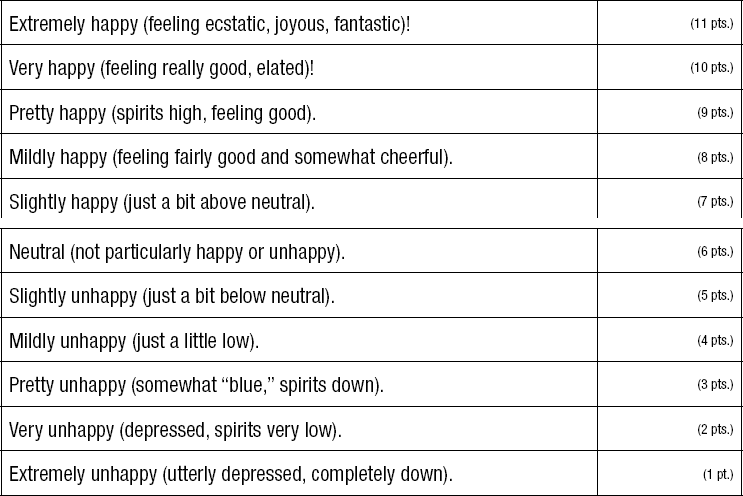

Calculating your score for Part III:

Your raw score can range from a low of 7 to a high of 53.
Your Being Beautiful Raw Score
Life satisfaction is just what it sounds like. How happy are you right now, and how pleased are you with the way your life has turned out so far? Self-esteem is a good marker of how good you feel about your ability to get things done in the world and your influence on other people. By boosting your self-esteem, you are able to be more effective in the world and more beautiful in the broadest sense of the word. Finally, two of the questions ask about the role of spirituality in your life. There is good evidence that having a solid spiritual foundation increases your life satisfaction. We’ll have more to say about spirituality in chapter 11.
If Your Raw Score Is
7–19
You’re not that happy with life right now. And you’re down on yourself quite a bit. There may even be other people who are down on you. You might want to talk to a therapist or counselor (if you aren’t doing so already). Depression affects many people over the course of their lives, and it can really stand in the way of your ability to be beautiful.
20–31
There are still days when you wake up and think you could be happier and that you could be doing a better job of living up to your potential. We have a lot of advice to offer. Inner and outer beauty will help increase your life satisfaction, self-esteem, and spiritual health.
32–42
Overall, you feel pretty good about life and your place in the universe. There are days when you can be hard on yourself, but our goal is to help you experience fewer of the bad days and more of the good ones.
43–53
Life feels pretty great to you most days. You probably have a lot of inner and outer beauty already. At the same time, there are a lot of insights in this book that we believe will help you in your continuing quest to make yourself a better person.
Part IV: Understanding YOU
From the list of 60 descriptive words below, pick 5 characteristics that most accurately describe the Current YOU. We know that many of the words could describe YOU, but your challenge is to whittle the number down to the top 5. Next pick 5 words that describe the Potential YOU. Remember, many of the things you would ideally like to be may be things that are already part of the Current YOU. That is, you may be living out some of your ideal characteristics right now.
Since our greatest strengths are often things that are invisible to us, you may want to get some feedback from other people about your strengths. Copy this page and share it with loved ones and coworkers. If they’re the same people, perhaps you can forward this document to Human Resources instead.
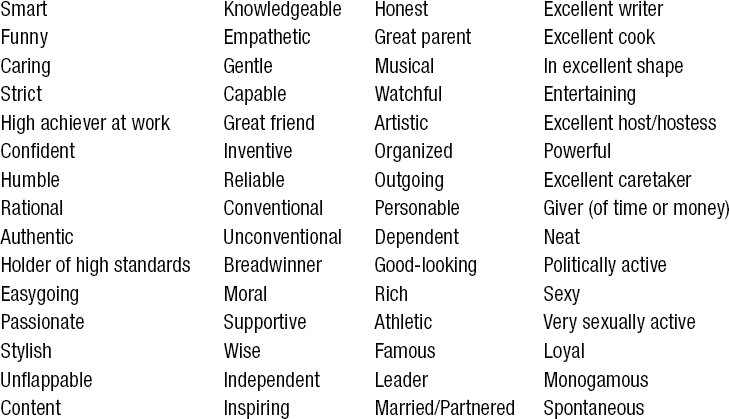
Calculating your score for Part IV:
See how many words overlapped between the lists you created for the Current YOU and the Potential YOU. For each word you have in common, take 6 points.
0 overlapping words: Give yourself 0 points.
1 overlapping word: Give yourself 6 points.
2 overlapping words: Give yourself 12 points.
3 overlapping words: Give yourself 18 points.
4 overlapping words: Give yourself 24 points.
5 overlapping words: Give yourself 30 points.
Your raw score can range from a low of 0 to a high of 30.
Your Understanding YOU Raw Score
In this section, you described aspects of who you are that can be changed, and your answers will help focus your efforts.
If Your Raw Score Is
0
Get going, tiger. There’s clearly a lot that you would like to be that is not quite the same as who you are.
1–18
You’ve started to achieve your ideals, but there’s still lots more work to go. Part III will help work out a game plan for change.
19–30
You’re well on your way. Keep it up. Remember, you don’t necessarily want Current YOU and Potential YOU to be identical (you always want to be striving for something!).
Your Final YOU-Q Score
Add your raw scores from each part to determine your YOU-Q Score:

The YOU-Q ranges from 15 to 160
Add up your YOU-Q points and start spreading the news. The closer the score is to 160, the more your Current YOU and Potential YOU match. This match between Current YOU and Potential YOU really does tell you a lot about yourself. It tells you how good you feel about who you are. It also gives you a sense of how well you’ve been able to make changes in yourself in the past and how well you’ve addressed challenges in your life.
Just to give you an idea about your score, a score of around 160 is nearly impossible to achieve, and you shouldn’t think of that as a goal. Just as you probably don’t know anybody with an IQ of 160, you probably don’t know anybody with a YOU-Q of 160. If your YOU-Q is 100 or above, then you are pretty typical of people who take this test. Finally, don’t pay a lot of attention to small differences between scores. If you got a 105 and your best friend got a 110, that is essentially the same score. It does appear that having a younger Real Age than biological age helps you achieve a higher score—and more happiness. (Take the Real Age test at www.realage.com.)
To validate the YOU-Q, we gave the survey to 1,174 women and 533 men who had taken it on the RealAge website. The average YOU-Q score for the women was 95 and for men was 99, so both genders have about the same happiness score. This average stays the same across our lifespan, but individuals can increase and decrease their score as they age. If your YOU-Q is way above 100, congratulations! You’re already well on the path to beauty. If it is well below 100, then you have got some work ahead of you. Luckily, your YOU-Q differs from your IQ, because your YOU-Q is easy to change. So no matter what your YOU-Q, you’ll find plenty of great advice in the pages to come that will help that score go up.
As you make changes in your body, your health, and your inner self, you will also experience changes in your life satisfaction and self-esteem. All of these factors will increase your YOU-Q. Periodically come back and take the YOU-Q again, and watch the YOU-Q grow—just as you do.
Part I
Looking Beautiful
Glowing Skin
Luscious Hair
Marvelous Mouth
Nice Digits
Sexy Shape
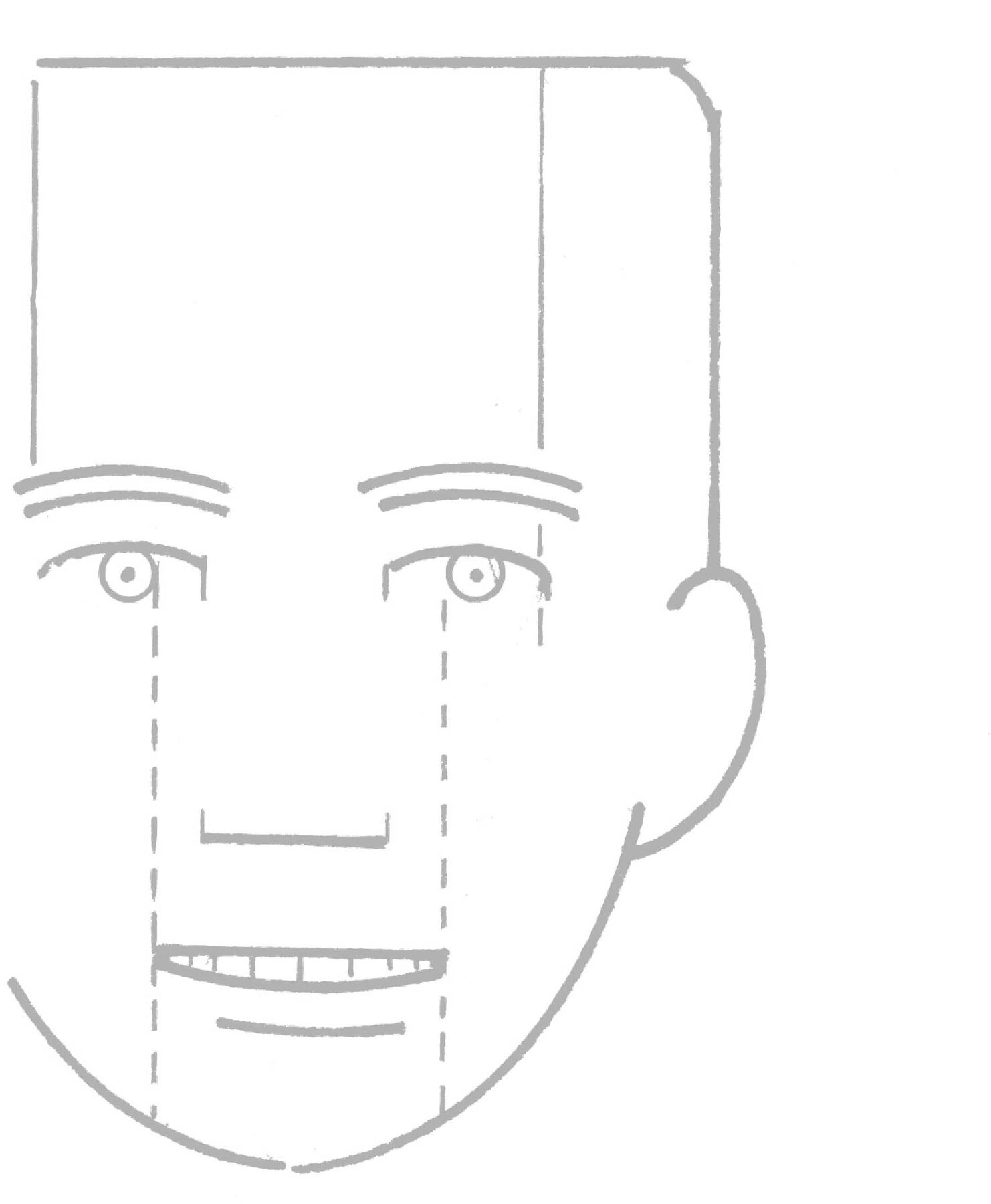
Quick, think of a place that doesn’t have a mirror. Pretty hard, right? Bathrooms, of course, have them. So do cars, department stores, gyms, supermarkets, hotel lobbies, bars, subway cars, purses, bedroom walls, and bedroom ceilings. In fact, you’d almost have to be living in solitary confinement or a single-seat submarine not to have the opportunity to judge your own appearance through your reflection.*
Besides constantly being judged by your own gaze, your face and body often serve as the target for other people’s eyes (and perhaps whistles). While it may seem unfair to be under such constant visual scrutiny, the fact remains that beautiful people have more advantages than unattractive folks. Sounds harsh, we know, but just consider the evidence:
Mental acuity, interpersonal skills, and moral goodness are all associated with physically beautiful people.
Beautiful people are believed by others to have happier marriages and more rewarding jobs. And they’re more likely to be hired, have a higher salary, and be promoted sooner.
Better-looking people are more likely to marry sooner, as well as to marry people who have more money and higher social status.
More attractive babies have even been shown to be rewarded with greater overt maternal affection.
In this part of the book we’ll be examining the elements that primarily determine whether or not you’re perceived as beautiful or not—things like skin, hair, and body shape. But before we start any specific discussion of various wrinkles and jiggles, we’d like you to take a step back and look at the bigger picture.
Though we’ll have plenty to say about the body’s anatomical wonders, the most important body part of all when it comes to beauty isn’t a luscious lip or hardened glute. It’s your brain.
Now, we’re not suggesting that the pituitary gland and hypothalamus are party-stopping body parts the way a silky mane or a plywood-flat waist may be.* What we are suggesting is that beauty is always on your mind. In fact, your brain needs beauty.
Your brain—under intense demand to process an infinite amount of information at any given moment—must make choices about whom to trust, whom to mate with, and whom to run from. It does this by dispensing with unnecessary stimuli—and drawing conclusions from a select few pieces of info. So we’re not programmed to not worry about whether a strand of hair is out of place but are programmed to note the subtleties of facial expressions, whether the slight curve in a lip is conveying anger, sadness, or fear. That process, really, is the foundation of perception—how you perceive and contextualize the facts and faces all around you.† Beauty is not as much a physical property of the person, as the end product of a complex mental process that translates millions of meaningless dots of light on the back of our retinas into 3-D shapes, objects, and faces. Embedded in the software of the mind is a set of rules that are used to decode these raw “bytes” of visual information. Think of these “bytes” as the letters in the alphabet. The perceptual rules are like grammar; they determine how the parts are combined to create a whole.
What’s most interesting is that these observations are automatic—a beauty reflex, if you will. Most of us, especially when we’re young, have a strong sex drive—a drive so strong, in fact, that it often overshadows all of our other natural drives. But nobody instructed us to be sexually attracted to others. We didn’t have to learn about hourglass figures or chiseled jaws. It was instinctive—a genetically programmed behavior.
These instinctive behaviors aren’t conscious acts. They’re spontaneous, irrepressible, and predictable. They’re performed without evident reason, but rather with stimulation. Your beauty detectors, like Doppler radar, are able to scan the environment in real time for signs of an attractive mate and forecast a conclusion about that environment. Your assessments are fast and accurate. For example, you can observe a human face for a fraction of a second and accurately rate its beauty—and what it’s trying to communicate to you, through expressions, nuances, and all kinds of nonverbal signals. Similarly, your appearance affects the first impressions that others have of you. And that first one can be a lasting one.
So how do we make those snap judgments? It all starts with a group of numbers called the Fibonacci sequence. That sequence is 0, 1, 1, 2, 3, 5, 8, 13, and so on. Each new number is the sum of the two before it, and the ratio of each number to the one before it approximates the value of phi, or 1.618.* OK, so you may be asking what in the world a group of numbers has to do with the fact that you prefer just a little bit of nicely groomed chest hair. Well, phi is the basis for what’s called the divine proportion or the golden ratio: the ratio of lengths from one element to another is 1.618 to 1 (see Figure A.1). This golden ratio is found throughout nature, from leaves to seed arrangements to conch shells, and it also figures prominently in a list of man’s greatest accomplishments, like the Great Pyramids, the Parthenon, Michelangelo’s David, and Leonardo’s Mona Lisa. The omnipresence of phi throughout our world creates a sense of balance, harmony, and beauty in the designs we see naturally and artificially.
Phi is also a driving force in human attraction—men and women around the globe prefer a mate whose face is symmetrical and follows this ratio. (More than 2,000 years ago, Pythagoras developed a formula for the perfect female face, which included such stats as this one: The ratio of the width of the mouth to the width of the nose should be—tada!—1.618 to 1.) In this part, you’ll see more examples of this on the human body. Now, we’re not suggesting that you move your eyeballs closer together or farther apart if they don’t meet these statistical standards, but we are suggesting that there are many easier options that can make the ratio closer.
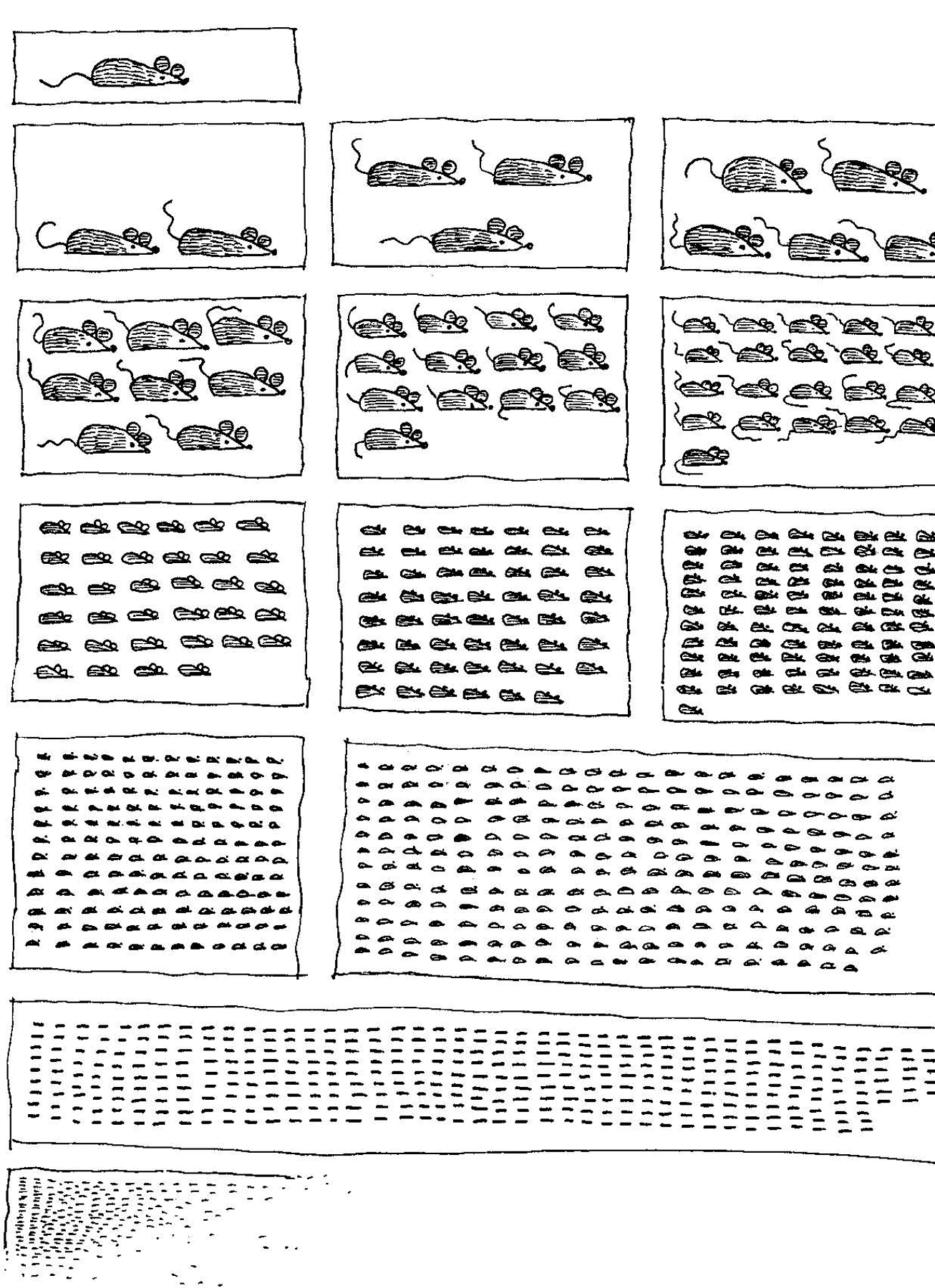
Figure A.1 Oh, Rats! The reproductive patterns of animals gave us the formula for beauty. Each generation of life—whether flower petals or lips—reproduce with a predictable ratio. As the proportion of offspring produced increases, the ratio of one block divided by the one before it serves as the foundation for things we perceive as beautiful. So, 5/3 is about 8/5 is about 13/8, or about 1.6—the golden ratio.
Our point: Humans do have universal (and subconscious) standards of beauty—underscoring its importance and the fact that your brain really does make reflexive decisions about people based on appearance that affect every aspect of your life.
There’s a reason why we have to use this reflex—it would take way too much time to assess others if we didn’t have it. Consider this:
Just about every situation we confront in life provides infinitely more inputs than we’re able to process productively. A classic example of this idea is chess. While the game is reasonably well defined and contained, after just ten moves there are literally billions of possibilities to consider for a next move. Assuming we could evaluate these options at a rate of about one per second, it would take about 9,000 years for us to consider all the possibilities. Not only would this make for a really long chess match, it underscores the brain’s need to keep it simple.
Safari Secrets:
Lessons from the animal kingdom

The reason we all look a little different may not be obvious today, but there’s an evolutionary basis for our genetic differences. At first glance, zebra stripes seem like a bull’s-eye for predators. In fact they’re the wild’s greatest camouflage system because predatory animals, which see only in black and white, can’t see zebras standing in the tall grass. Also, zebras blend in with the heat waves coming off the ground, which look alternating black and white against the sand, so they’re especially confusing to the pestering tsetse flies—an example of how an animal’s looks respond to external pressures.
Because of the immense computational complexity and impracticality of processing all the inputs a particular situation presents, the cognitive system has developed a number of mechanisms that limit the number of possibilities that are considered. How? For one, the eye takes in a limited amount of high-quality information (through a part of the eye called the fovea), which is supplemented with lower-quality info as needed. As your eye moves to process the info, it takes in only a fraction of what’s in your horizon. In a constant state of vibration, the eye repeatedly refreshes what it sees (like refreshing web pages). These movements help your brain decide what it is you’re looking at (and without the movements, we’d actually lose our vision because the rods and cones in our eyes respond only to certain changes). So you take some shortcuts and make leaps about what you see; you need cues like beauty and waist-to-hip ratio—things with scientific and universal standards—to make judgments about people. You can’t contemplate 9,000 different nuances in someone’s face in a timely fashion. You keep it simple.
For example, the most information-dense visible area in nature is the human face, so we process a small area of the face and extend our conclusions to the entire surface. The right changes (even if they’re small) can make a huge impact on how you’re perceived. Much of “seeing” someone you know is memory, since we don’t reanalyze an entire face each time.* The richest connection of nerve and muscle density in the body is actually around the larynx (voice box), and the face is second—underscoring how important it is that you read subtle messages through speech and body language. Some argue that growth of the frontal lobe of the brain happened because of these rich connections and our ability to sense and transmit so much information beyond what most animals can.
Your face communicates whether you’re happy, sad, mad, disgusted, surprised, or ready and willing to do the two o’clock tango. Similarly, you receive information about other people through their eyes, their mouth, even their skin. The whole notion of beauty revolves primarily around nature’s hockey masks—either you’ve got a well-designed one or you don’t. Now, the question is: How do we define well-designed?
The theory is that the more symmetrical a face is, the healthier it is. As you can see in Figure A.2, that symmetry is divided into several planes, including horizontally, vertically, around the eyes, around the nose, and so on. The formula for beauty is that precise golden ratio (go ahead and pull out a ruler and a calculator on your next date). The same ratio holds for the width of the cheekbones to the width of the mouth. Scientists also believe that symmetry is equated with a strong immune system—indicating that more robust genes make a person more attractive.
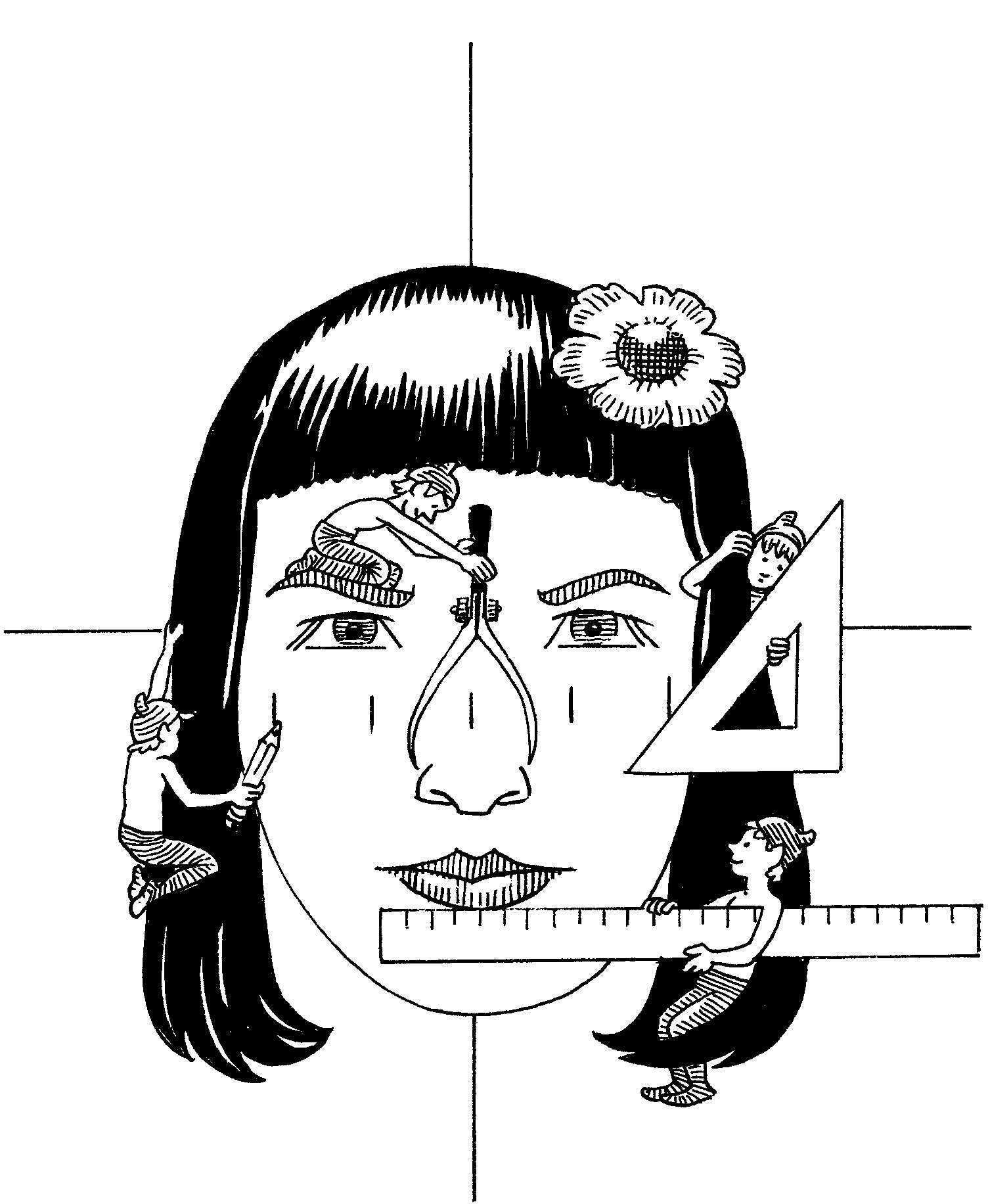
Figure A.2 Divine Ruler Using the golden ratio of 1.6, we judge the beauty of other people’s faces (and other body parts). We use that ratio—subconsciously and reflexively—to decode whether someone’s eyes, face, and body are, in fact, beautiful.
Of course, that’s the element of beauty that you typically can’t control. You have what you were born with. But that doesn’t mean that you can’t make changes—changes to enhance your beauty and, along with it, the way you feel about yourself.
That begs a few very interesting questions about our own beauty. What do you see when you look in the mirror? How do you think others see you? How much of your self-image has been determined not by who you are but by who others think you are? How much has your sense of the outer you influenced the inner you? To some degree your appearance influences how well you do in love, at work, and in life, but most of us feel we don’t measure up. So the question is, should you just accept yourself as you are? Or should you try to improve your appearance? How far should you go? What should you try to improve? Will it make you happier or feel more satisfied with yourself? And which comes first? Does being satisfied with your appearance lead to a higher self-concept, or does having a high self-concept create a greater sense of happiness?
In the first five chapters of this book, we’ll be showing you tips and tricks that will help your skin glow, your hair shine, and your body shrink. They’re things that we believe will not only make you look better to the rest of the world but also help you feel a lot better in your inner world.
Конец ознакомительного фрагмента.
Текст предоставлен ООО «ЛитРес».
Прочитайте эту книгу целиком, купив полную легальную версию на ЛитРес.
Безопасно оплатить книгу можно банковской картой Visa, MasterCard, Maestro, со счета мобильного телефона, с платежного терминала, в салоне МТС или Связной, через PayPal, WebMoney, Яндекс.Деньги, QIWI Кошелек, бонусными картами или другим удобным Вам способом.





